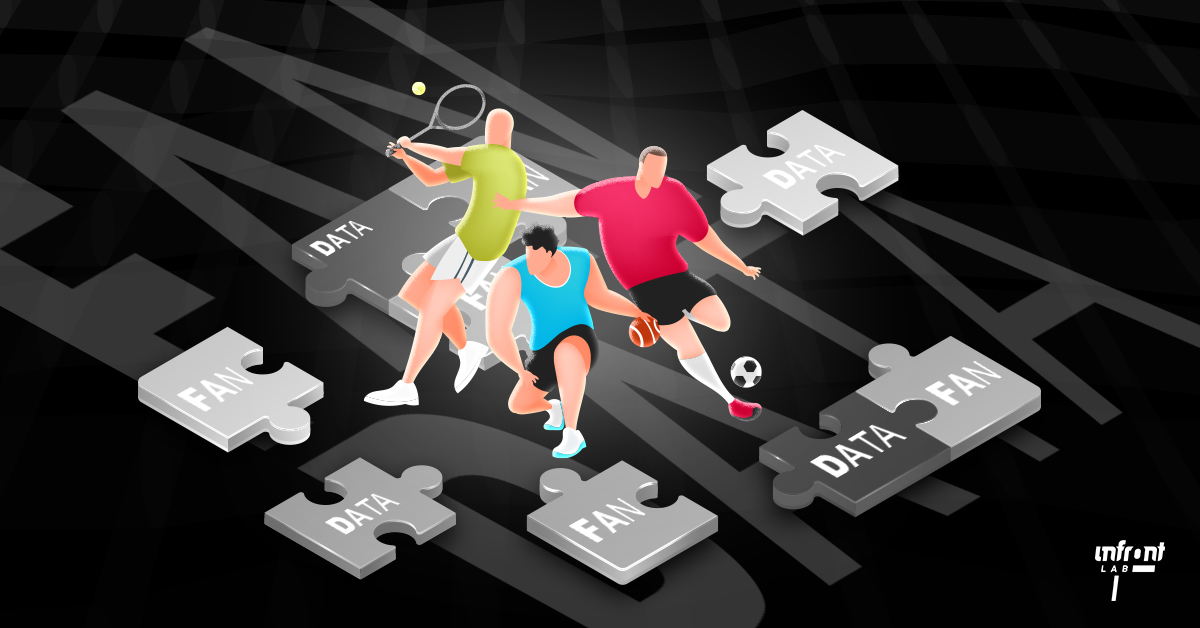With digital technology and growing social presence, data has become an integral part of sports operations, both on the playing field and when it comes to fan engagement. Data enables sports teams, leagues, and organisations to gain insights into their fan base and make better decisions when it comes to targeted marketing, promotions and content.
First-party data and zero-party data can play a huge role for sports. What are first-party data and zero-party data? What is the difference between them and how they are used in sports?
Here we take a look at what each is, how they can be used in sport and outline their benefits and challenges of using first-party zero-party data.
First-party data
First-party data is insights that are collected directly by sports teams, leagues or organisations. This can include details like online registration with usernames, transactional data if a fan purchased tickets or merchandise, and survey results. It can be collected when fans interact with sports entities on websites, social media or via purchasing portals.
The data collected can be used to gain insights into fan behavior online, preferences, and even interests. It can also be used to create personalized experiences for customers, such as targeted promotions and offers.
Zero-party data
Zero-party data is data that is voluntarily shared by fans, and can be on a more personal level than first-party data. What does this mean? It can include information such as favorite players and athletes, how fans prefer to watch their favorite sports, where they are from if the sports organisation has a global fan base, and much, much more. This data can be collected via surveys, polls, and other forms of direct customer feedback, including gaming and activations.
Needless to say, zero-party data provides deeper insights into fans’ preferences than first-party data. It enables sports organisations to gain a better understanding of fans, and by doing so, create more personalized experiences for each fan as an individual. This data can also be used to create targeted promotions and offers based on their preferences.
Challenges with first and zero-party data collection
Fan data provides valuable insights for sport organsiations, but getting your hands on this data can be challenging, especially with new privacy regulations and GDPR. For these reasons, collecting the information directly from the source is crucial. But how does one get their hands on first-party and zero-party data?
Continuously creating surveys and marketing campaigns to generate feedback can be a time-consuming and exhausting process, for both marketing teams and fans. How often can a fan rate their experience or answer feedback surveys before they get bored? How many bland surveys can a content creator write without feeling like he or she is repeating themselves?
Additionally, collecting zero-party data requires building trust and establishing relationships with fans, while many may be reluctant to share their personal information with teams and leagues.
Using activations to engage and build relationships
Simple gaming activations can go a long way in building relationships with fans, generating engagement and collecting valuable data. Such activations can include a short prediction game, such as who will win the match, or a digital version of a memory game where fans have to match images of their favorite players.
These little games, which can be altered and updated so each is different and engaging, offer a great way to engage fans on a regular basis, and repeatedly, via social media, owned apps and websites.
But where does the data collection come in? Fans voluntarily answer questions about themselves prior to playing these games. These questions can be anything from where the fan lives, to who his or her favorite player is, where they watch games, their favorite snack to eat while watching the game, and anything that may help sports marketing teams learn about their fans.
Data is already an essential asset for sports. Organisations can no longer ignore its importance, and must learn how to properly collect this MVP of data that will allow them to build long-lasting relationships with fans, improve their marketing efforts and even create new revenue streams by using analytics to join forces with sponsors and partners that interest their fans.
By leveraging improved and engaging data collection methods, sports entities can gain a better understanding of their fans, and optimize the overall experience surrounding their brand.






.jpg)